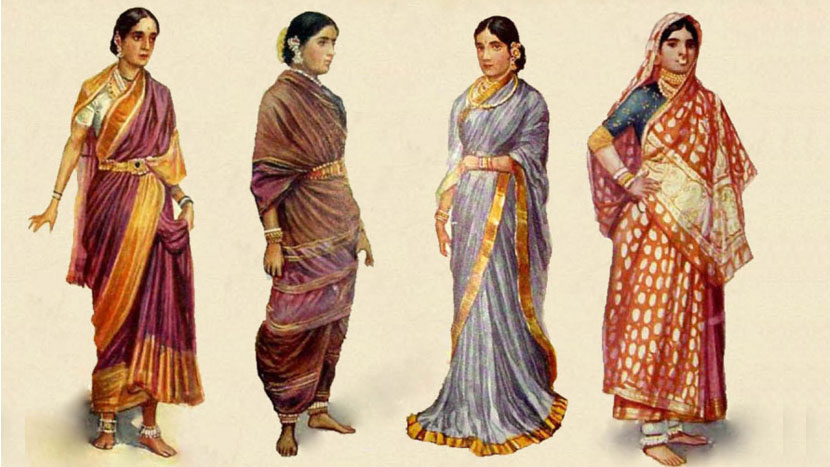Discover the evolution and cultural significance of traditional Indian saris, reflecting India’s rich heritage and diversity.
Traditional Indian saris are more than just garments; they are a symbol of India’s rich cultural heritage and have evolved over centuries to reflect the country’s diverse traditions and histories. Worn across India, saris are renowned for their versatility, intricate designs, and deep cultural significance. The sari, a long piece of cloth typically ranging from 5 to 9 yards, is draped in various styles depending on regional customs and personal preferences, embodying both elegance and practicality. This article explores the historical evolution of traditional Indian saris and their cultural importance, highlighting how they have become a cherished part of Indian identity.
Historical Evolution of Traditional Indian Saris
The history of the sari dates back thousands of years, with references found in ancient texts and artifacts that reveal its enduring presence in Indian society.
Origins and Early Mentions
The sari is believed to have originated in the Indus Valley Civilization, around 2800-1800 BCE, where evidence of draped garments has been found in statues and terracotta figures.

- Ancient Texts and Artifacts: Early mentions of the sari are found in Vedic literature and ancient texts like the Rigveda, where it is described as “nivi” or a draped garment worn by both men and women.
- Evolution of Draping Styles: As India transitioned through various historical periods—such as the Mauryan, Gupta, and Mughal eras—the sari evolved in style and draping techniques, influenced by regional and cultural shifts.
Influence of Regional Traditions
India’s vast cultural diversity is reflected in the myriad ways the sari is worn, with each region developing its unique style and technique.
- Banarasi Saris (Uttar Pradesh): Originating from Varanasi, these saris are known for their rich, intricate brocade work, often woven with gold and silver threads. They became particularly popular during the Mughal era.
- Kanjeevaram Saris (Tamil Nadu): Renowned for their durability and vibrant colors, Kanjeevaram saris are woven from pure mulberry silk and often feature traditional motifs inspired by temples, nature, and mythology.
Colonial Era to Modern Day
During the British colonial period, the sari underwent further transformations, adapting to new influences while retaining its cultural roots.
- Impact of Colonialism: The British colonial era saw the introduction of new fabrics and designs, but the sari remained a symbol of Indian identity and resistance. Nationalist leaders like Mahatma Gandhi encouraged the revival of hand-spun, hand-woven saris as part of the Swadeshi movement.
- Contemporary Trends: In modern times, the sari continues to evolve with changing fashion trends. Designers have experimented with new fabrics, colors, and draping styles, making the sari a versatile garment for both traditional and contemporary settings.
Cultural Significance of Traditional Indian Saris
The cultural significance of the sari extends beyond its aesthetic appeal; it represents a deep connection to Indian heritage, tradition, and social identity.

Symbol of Cultural Identity
The sari is a powerful symbol of cultural identity in India, worn by women across different religions, regions, and social strata.
- Representation of Womanhood: Traditionally, saris are considered a rite of passage for Indian women, marking important milestones such as coming of age, marriage, and motherhood.
- Expression of Regional Heritage: Each type of sari, from the delicate Chanderi to the bold Bandhani, reflects the history, culture, and craftsmanship of its region, serving as a form of cultural expression.
Spiritual and Ritualistic Importance
Saris also hold spiritual and ritualistic importance in Indian culture, often worn during religious ceremonies, festivals, and life events.

- Religious Ceremonies: In Hinduism, saris are considered auspicious garments for religious rituals and weddings. The color and style of the sari can signify different spiritual meanings, such as red for fertility and purity, and white for mourning.
- Festivals and Celebrations: During festivals like Diwali, Durga Puja, and Pongal, women adorn themselves in vibrant saris, symbolizing joy, prosperity, and tradition.
Symbol of Empowerment and Modernity
In contemporary times, the sari has also become a symbol of empowerment for many Indian women, blending tradition with modernity.

- Political Symbolism: Influential women leaders like Indira Gandhi and Sonia Gandhi have used the sari as a political symbol, projecting both cultural pride and authority.
- Global Fashion Statement: The sari has gained international recognition, celebrated on global fashion runways and embraced by women worldwide for its elegance and versatility.
Conclusion
Traditional Indian saris, with their rich history and cultural significance, remain an integral part of India’s cultural fabric. From their ancient origins to their modern interpretations, saris continue to evolve while retaining their status as a symbol of Indian heritage and identity. Whether worn for daily wear, festive occasions, or global fashion statements, the sari stands as a testament to India’s enduring craftsmanship, diversity, and timeless elegance.
